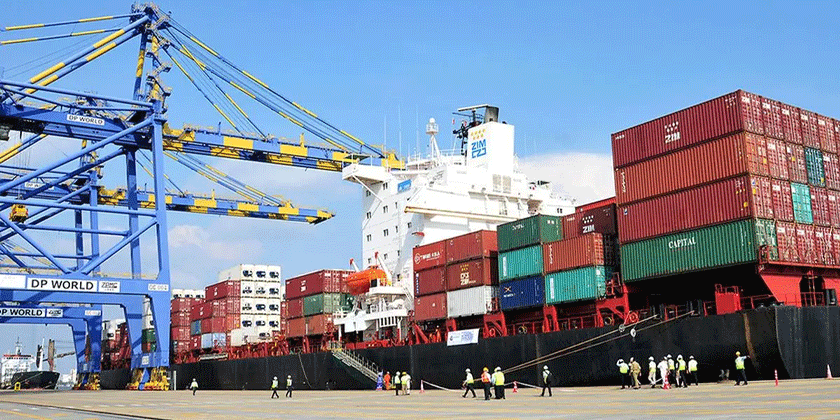Port vs. Inland Transport: Choosing the Right Route for Bangladeshi Exports
As Bangladesh strengthens its global trade presence, businesses and exporters face a vital logistics decision: should they rely more on seaport-based transportation or develop robust inland transport systems? While the country’s economic zones, export-oriented industries, and trade relationships flourish, choosing the right logistics strategy can significantly impact cost, efficiency, and market reach.
This guide explores the pros and cons of port and inland transport, the current infrastructure status, and how businesses can optimize their export supply chains.
🌊 The Role of Ports in Bangladeshi Trade
Bangladesh’s key seaports — Chattogram Port, Mongla Port, and Payra Port — serve as critical arteries for export-driven sectors like ready-made garments (RMG), leather goods, pharmaceuticals, and frozen seafood.
🔹 Chattogram Port: The Main Gateway
-
Handles over 90% of Bangladesh’s import-export trade.
-
Located strategically near Dhaka and EPZs (Export Processing Zones).
-
Modernization projects like container terminals and port digitization are underway.
Backlink: Learn more about export handling at Chattogram Port
🔹 Mongla and Payra Ports: Secondary Hubs with Growing Importance
-
Mongla Port, situated in the southwest, supports Khulna and nearby economic zones.
-
Payra Port, a newer deep-sea facility, aims to relieve pressure from Chattogram and improve trade with India, Bhutan, and Nepal.
Backlink: Explore Bangladesh’s port network and agent support
✅ Benefits of Port Transport
-
Cost-effective for bulk cargo and international shipping.
-
Direct connectivity with global markets.
-
Support from freight forwarders, shipping lines, and customs agents.
❌ Challenges
-
Port congestion and customs delays.
-
Strikes and labor issues occasionally disrupt operations.
-
Limited hinterland connectivity increases time and cost.
🚛 Inland Transport: The Silent Backbone
Inland transport includes road, rail, and riverine systems that connect production hubs to ports and neighboring countries like India and Nepal.
🔹 Road Transport
-
The Dhaka–Chattogram highway is the busiest trade corridor.
-
Recent upgrades have cut down travel time, improving efficiency.
-
Over 60% of domestic logistics depend on roads.
🔹 Rail Transport
-
Railways are gaining traction due to lower fuel costs and fewer delays.
-
The government is investing in multimodal logistics parks and rail links to economic zones.
🔹 Inland Waterways
-
Bangladesh has over 24,000 km of navigable rivers.
-
River transport is cheap and sustainable but limited by seasonal depth issues.
Backlink: Read more about Bangladesh’s inland transport support
✅ Benefits of Inland Transport
-
Faster movement to and from factories in EPZs and SEZs.
-
Reduced congestion at ports when using river routes.
-
Multimodal options allow more flexibility in supply chain planning.
❌ Challenges
-
Limited rail and waterway coverage in some regions.
-
Road infrastructure is prone to traffic congestion and seasonal damage.
-
Lack of modern logistics hubs in rural areas.
🏭 Use Case: Exporting RMG from Dhaka
Scenario 1: An RMG exporter in Dhaka wants to ship 10 containers to Europe.
Option A: Use road transport to Chattogram Port, then ship.
Option B: Use rail to Chattogram, saving 20% in fuel and reducing delays.
Option C: Use a combined route: truck to inland container depot (ICD) → rail to port → ocean freight.
Optimal Route:
A multimodal inland option (C) reduces costs and avoids road congestion — especially beneficial for exporters under tight delivery timelines.
Backlink: Discover how we assist exporters with transport planning
📈 What Do Global Manufacturers Prefer?
Companies in Bangladesh’s Special Economic Zones (SEZs) prefer integrated transport models, combining inland and port options. This hybrid approach improves turnaround time, especially for time-sensitive shipments such as fast fashion and electronics.
-
Japanese and Korean investors in Araihazar Economic Zone and Korean EPZ are pushing for rail-based logistics.
-
Freight consolidation hubs near Dhaka and Narayanganj are growing in demand for just-in-time exports.
Backlink: Why global companies rely on local agents in Bangladesh
📦 Choosing the Right Route: A Decision Framework
| Criteria | Port-Based Transport | Inland Transport (Road/Rail/River) |
|---|---|---|
| Cost Efficiency | High for bulk goods | High for short-haul, smaller loads |
| Time Sensitivity | Medium | High (with multimodal options) |
| Environmental Impact | Moderate to High | Low (especially river & rail) |
| Risk & Delays | Port congestion | Traffic/weather delays inland |
| Flexibility | Limited to port schedules | Flexible with regional access |
🚀 Final Thoughts: Balancing Port and Inland Transport for Export Success
Bangladesh’s future as an export powerhouse depends on logistics efficiency. While seaports will remain vital for global trade, inland transport systems offer flexibility, speed, and cost benefits that cannot be overlooked.
Exporters, freight forwarders, and sourcing agents should adopt a multimodal logistics approach, combining inland and port solutions to maximize value. By doing so, Bangladesh can boost competitiveness, meet global delivery standards, and attract more foreign investment.
🔗 Need Help Navigating Bangladesh’s Export Logistics?
Whether you’re an international brand, SME, or sourcing agent, Bangladesh-Agent.com offers full-service solutions for:
-
Transport route optimization
-
Port documentation and customs clearance
-
Inland logistics planning
-
Warehousing and container management
👉 Contact a verified logistics expert today to streamline your export operations in Bangladesh.
